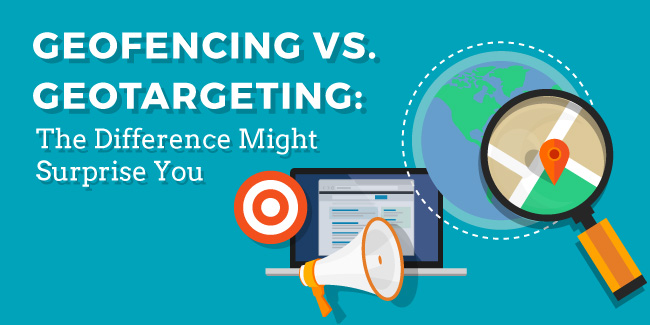In the digital marketing industry, many words can often have different meanings. One of the most commonly confused concepts is geos. At Catalyst, we hear the terms geofencing and geotargeting used incorrectly or interchangeably, when, in fact, they are different targeting strategies that should be used for specific campaign objectives. Understanding the meanings of geofencing and geotargeting is the first step. It will then become easier to understand why, when, and how the appropriate targeting is determined.
Geofencing refers to drawing a virtual barrier around a location using users’ IP addresses. Ads inside this parameter can be seen on a computer, tablet, or mobile devices by any users within this location. Locations like universities, stadiums, and neighborhoods are often tightly targeted to an audience in that location that would likely be interested in local deals, businesses, or services. Some services, such as Snapchat, allow you to geofence a specific area by drawing a virtual fence on a map around the desired space in order to place ads or filters.
Geotargeting refers to delivering ads to people that meet a specific targeting criteria and are inside a defined radius. The key difference with geotargeting is that it hones in on a specific consumer criteria, such as demographics, behaviors, interests, and a person’s location. Geotargeting can also exclude specific locations. This targeting tends to work better for larger geographical audiences because ads can be more specifically defined by demographics and keywords. This is the standard targeting strategy implemented on all Catalyst social media and Google ads.
Catalyst offers geofencing and geotargeting strategies on multiple platforms, including Facebook, Instagram, the Facebook Audience Network, the Google Search Network, the Google Display Network, and Snapchat.
One important item to remember is that the minimum radius on all platforms is one mile. That means we can’t target a single local business without getting all users within one mile. In this instance, we would implement the geotargeting approach to ensure we limit users by targeting a specific demographic. Targeting stadiums, universities, geographical events, or entire neighborhoods would be good examples of geofencing.
Catalyst’s current geofencing and geotargeting capabilities include the following:
- Schedule ads to show during specific times.
- When a tagged user leaves the geofence, they will still see the ad for up to 30 days, and their phone ID will be placed in a retargeting folder for future campaigns.
- Create ads to speak to users currently in the location. For example: “For the next hour only, leasing rates as low as $500 a month. Come see us down the street!”
- Adjust bids on ads to prioritize better locations. By raising your bid for more desirable target locations, you increase your exposure in that area, while lowering your bid in other areas keeps your reach broad at a justifiable rate.

